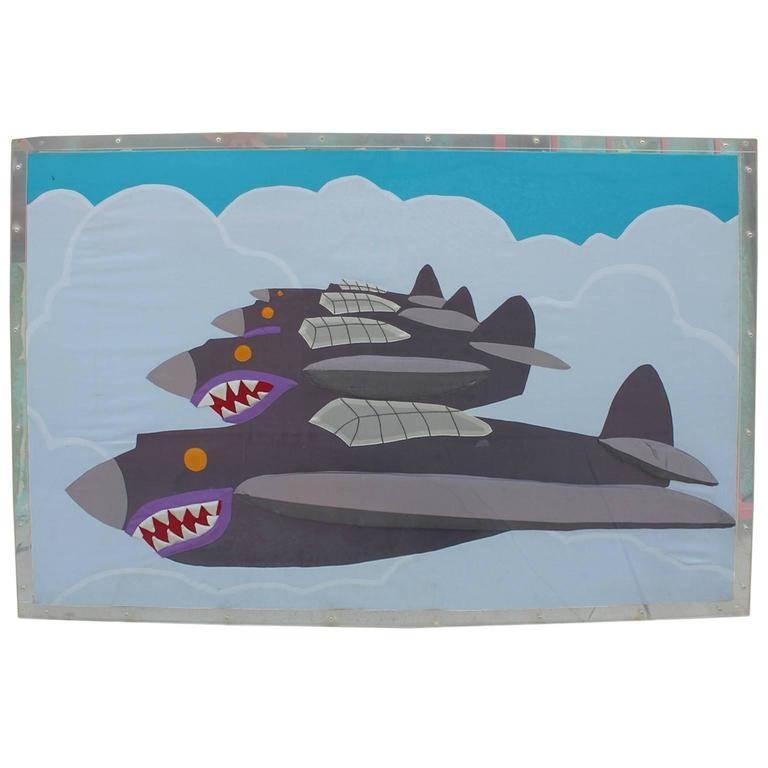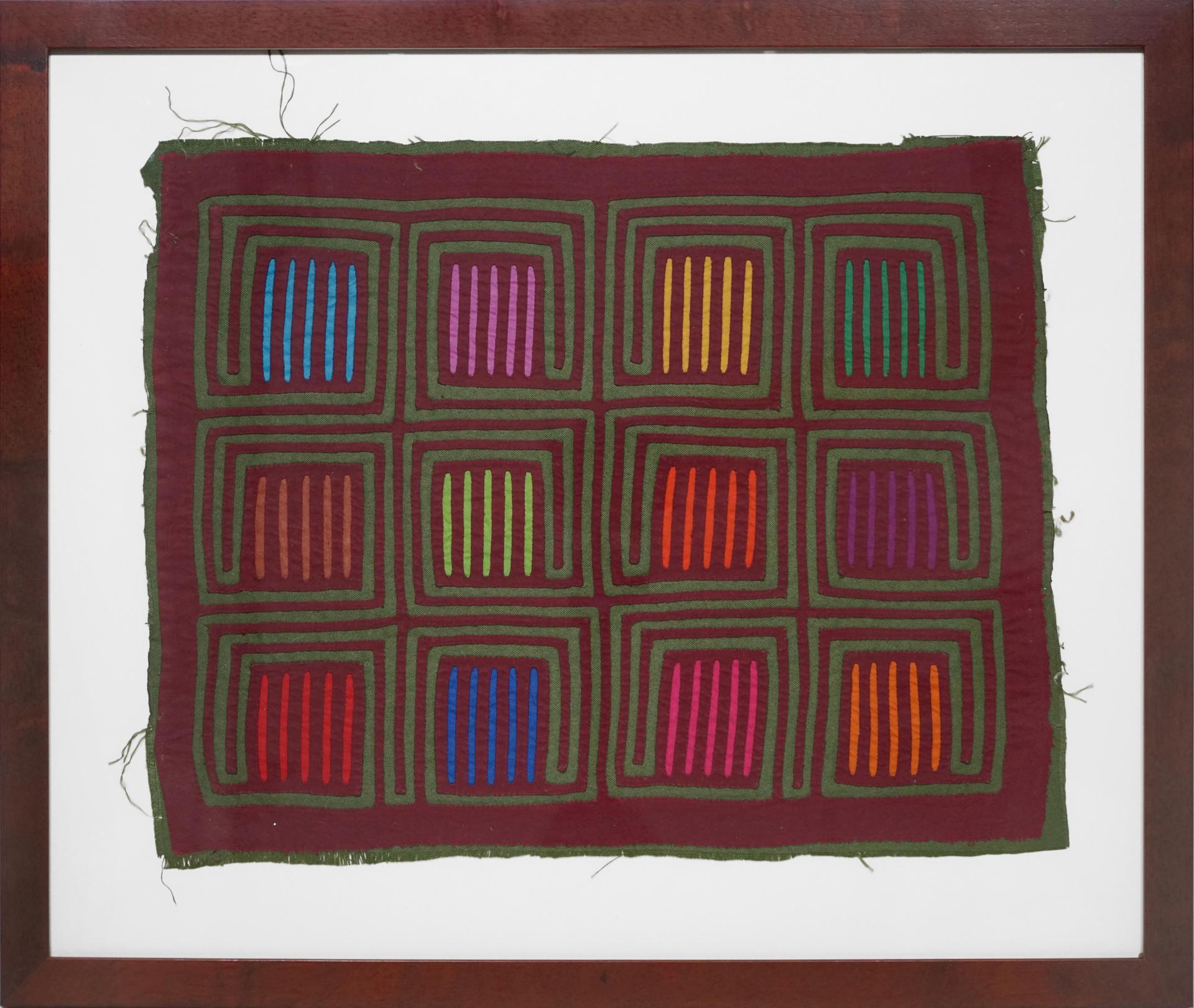Items Similar to "Fabric - Ashanti Tribal Cloth, " Silk Weaving from Africa circa 1930
Want more images or videos?
Request additional images or videos from the seller
1 of 6
Unknown"Fabric - Ashanti Tribal Cloth, " Silk Weaving from Africa circa 1930circa 1930
circa 1930
About the Item
Among the most well-known West African textiles is kente cloth, woven by the Ewe and Asante peoples of Ghana. The word kente is not used by the Asante people; it may be derived from the Fante word kenten ("basket") which refers to the checkerboard appearance of the cloths. Both cultures weave similar types of cloth. Kente is known as "prestige cloth" because it has been a symbol of status and wealth for its wearers. Once the textile of kings, it is now worn by anyone who can afford it.
The Asante people controlled the only source of gold available to pre-Columbian Christendom. They prospered through trade with the Portuguese, Dutch, British, and other European traders. Their great wealth allowed the king and court to commission sumptuous and densely patterned cloth for royal textiles. As there are no silkworms indigenous to Ghana, Asante leaders acquired silk textiles through trade. Local artists then unraveled the cloths to obtain silk threads of many colors to be used in the weaving of cloth. Alternatively, Italian waste silk was brought down by camel caravan across the Sahara. The influx of imported fibers allowed the kente palette to be dramatically intensified. Asante kente is the product of narrow band or stripweaving done by men on a horizontal loom with four heddles. Stripweaving as a method of manufacturing cloth is most characteristic of West Africa. Asante kente cloth is characterized by vibrant colors and complex patterning.
Historically, the textile was made of silk. This brocade cloth is made of twenty to twenty-four strips about four inches wide sewn together selvedge to selvedge to make a man's garment. It is draped, toga-like around the body with one loose end brought up and over the left shoulder. Clothes for women are smaller and worn in pairs wrapped tightly around the body. Asante patterns are non-representational. Each pattern of background warp has a distinctive name as does each weft pattern and whole cloths also have names.
- Creation Year:circa 1930
- Dimensions:Height: 76 in (193.04 cm)Width: 46 in (116.84 cm)
- Medium:
- Movement & Style:
- Period:
- Condition:
- Gallery Location:Milwaukee, WI
- Reference Number:
About the Seller
4.9
Platinum Seller
These expertly vetted sellers are 1stDibs' most experienced sellers and are rated highest by our customers.
Established in 1966
1stDibs seller since 2017
390 sales on 1stDibs
Typical response time: 1 hour
- ShippingRetrieving quote...Ships From: Milwaukee, WI
- Return PolicyA return for this item may be initiated within 14 days of delivery.
More From This SellerView All
- "Kente Cloth Ashanti Tribe, Ghana, " Silk and Cotton Weaving created circa 1970Located in Milwaukee, WIThis silk and cotton fabric was made by an unknown Ashanti artist. It features green and orange accents. The Ashanti are a major ethnic group of the Akans in Ghana, a fairly new nation, barely more than 50 years old. Ghana, previously the Gold Coast, was a British colony until 1957. It is now politically separated into four main parts. Ashanti is in the center and Kumasi is the capital. The Ashanti have a wide variety of arts. Bark cloth was used for clothing before weaving was introduced. With weaving, there is cotton and silk. Women may pick cotton...Category
1970s Folk Art More Art
MaterialsCotton, Silk
- "Chancay" (Pre-Columbian) Mummy Mask wood face peruvian folk red human folk artLocated in Milwaukee, WIThe Peruvian Chancay (pre-Columbian) Mummy Bundle mask, from around 1600 is made of painted wood, textiles, and human hair. According to the Walters Art Museum: Andean cultures are ...Category
Early 1600s Folk Art More Art
MaterialsTextile, Wood
- "Kilim Rug (Red & Black), " Hand Woven Mid 20th Century under $4500 designLocated in Milwaukee, WIThis Kilim rug was hand woven in Turkey, circa mid-20th century from wool. It features geometric patterning in red, black, blue, and yellow and is priced under $4500. The design is perfect with any décor as it completes both contemporary and antique interior design settings. As part of the Design Lovers...Category
Mid-20th Century Folk Art More Art
MaterialsWool, Textile, Organic Material
- "Kente Cloth, Ashanti Tribe Ghana, " Cotton Weaving created circa 1970Located in Milwaukee, WIThis cotton fabric was made by an unknown Ashanti artist. It is mostly black and white. The Ashanti are a major ethnic group of the Akans in Ghana, a fairly new nation, barely more than 50 years old. Ghana, previously the Gold Coast, was a British colony until 1957. It is now politically separated into four main parts. Ashanti is in the center and Kumasi is the capital. The Ashanti have a wide variety of arts. Bark cloth was used for clothing before weaving was introduced. With weaving, there is cotton and silk. Women may pick cotton...Category
1970s Folk Art More Art
MaterialsCotton
- Kilim Rug Hand-woven design, under $4500Located in Milwaukee, WIThis Kilim rug was hand woven in Turkey, circa mid-20th century. It features patterns in yellow, gray, white, brown, and pink in a beautiful geometric design. Priced under $4500, this rug is sure to be enjoyed with several design schemes as it works in both modern and antique settings. Lovers of carpets will appreciate the wool under their feet as they keep their interior both stylish and comfortable. Kilim rugs are a pileless rug woven using just one of numerous flat weaving techniques that originated in parts of Turkey. Other geographical areas producing kilim style rug weaving include Iran, North Africa, Afghanistan, Pakistan, China, the Balkans, Central Asia, and the Caucasus. Perfect for the design lovers sale...Category
Mid-20th Century Folk Art More Art
MaterialsWool, Textile, Organic Material
- "Ceremonial Hunting Shirt - Yoruba, Nigeria, " Glass Beads, Shells, & ClothLocated in Milwaukee, WIFor the Yoruba people of Nigeria, beads and shells are applied to ceremonial garments and headdresses. Beads are an important part of Yoruba culture. henry John Drewal has written th...Category
1940s Folk Art More Art
MaterialsFabric, Glass, Found Objects
You May Also Like
- Abstracted Silk Applique Modern Tapestry in Lucite Frame Flying Tiger JetsLocated in Houston, TXWonderful abstract tapestry constructed of silk applique from the 1970's. Tapestry has the daring shark/airplane motif of the flying tigers. Excellent an...Category
1970s Folk Art More Art
MaterialsSilk
- Tapete Miniatura Azul y Vino / Textiles Mexican Folk Art Miniature Rug FrameBy Eustacia Antonio MendozaLocated in Jesus del Monte, MXFREE SHIPPING TO WORLDWIDE! Artisan: Eustacia Antonio Mendoza MASTERPIECE: Miniature rug made with Silk and Cotton threads dyeing with anilines, broca...Category
2010s Folk Art More Art
MaterialsTextile, Cotton, Silk
- Framed Hmong Appliqué Textile FragmentLocated in Chicago, ILDating to the mid-20th century, this colorful Hmong textile is a classic example of the appliqué technique used for the traditional cloth known as paj n...Category
Mid-20th Century Folk Art More Art
MaterialsTextile
- San Blas Molas, Multi-Layered Fabric, Handmade, Panama, Custom Frame,Located in Houston, TXThis is a handmade mola sewn by the San Blas Indian women. Approximate date is 1980. It is framed and protected by conservatorship class. When the gallery f...Category
1980s Folk Art More Art
MaterialsFabric
- SAN BLAS ISLANDS PANAMA MOLA Multi-Layered Fabric Handmade Custom Frame Folk ArtLocated in Houston, TXThis is a handmade mola sewn by the San Blas Indian women. Approximate date is 1980. It is framed and protected by conservatorship class. When the gallery f...Category
1980s Folk Art More Art
MaterialsFabric
- Rope Framed 19th Century Woolie featuring English ShipLocated in Austin, TX19th Century British Woolie 11" x 13" Medium: Wool Framed Sailboat featuring British FlagCategory
Mid-19th Century Folk Art More Art
MaterialsWool




